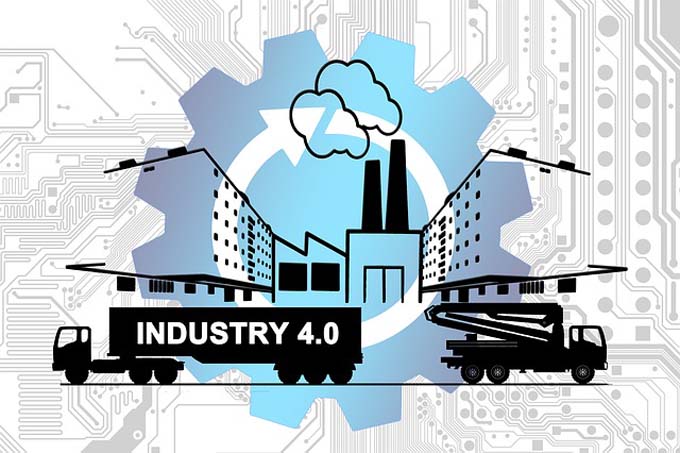ERP and Industry 4.0: 5 challenges, 5 solutions
Industry 4.0 offers plenty of opportunities to stay ahead of the competition. At the same time, it presents companies with high hurdles. A recent study by analyst firm Pierre Audoin Consultants (PAC) Germany identified the top 5 challenges for the use of ERP systems in Industrie 4.0 projects. One software manufacturer outlines possible solutions.

Some compare Industrie 4.0 projects to a marathon, while for other companies digitization is more of an obstacle course. Each company assesses the requirements very differently. The analyst firm PAC surveyed to this end in summer 2018 over 100 IT, production, manufacturing and purchasing managers in Germany. The consultants wanted to know which topics the SMEs consider to be particularly major challenges and which ones they consider to be rather minor.
With SOA against silos
68 percent of the study participants consider the integration of many different systems and data to be a particularly big hurdle. This is hardly surprising, since IT systems and sensor data from networked machines and plants often have to be integrated on the way to the smart factory. In order to overcome this hurdle, modern ERP systems provide numerous starting points - first and foremost the integration options via an enterprise service bus. This eliminates the high maintenance effort and operating risk associated with a confusing network of numerous one-to-one interfaces. Such a service-oriented architecture (SOA) makes cross-client, cross-system and even cross-company data exchange noticeably more efficient.
From hand to hand to hand
Manual operations are often still the norm in both production and commercial areas. The end-to-end digitization of processes is therefore a major challenge for 67 percent of companies. Workflow management can help here: Companies pass information from one instance to the next smoothly, as if in a perfectly harmonized relay. The checking and approval of invoices or the transmission of service hours for invoicing are typical examples that promise a quick return on investment.
Old iron made smart
Even if there is a European or even worldwide standard for the Industrial Internet of Things at some point in the future: It will come too late for machines that have already been purchased. Many IT managers are therefore racking their brains as to how they can network older machines and plants with the ERP system as the control center. Just under half of the participants in the PAC study saw this as a major challenge for themselves. The first promising pilot solutions have already been developed, for example, by connecting a mini-computer between the machine and the ERP system. A Raspberry Pi then receives production commands, processes them and forwards them to the machine. Conversely, machine data is also transferred to the ERP system in the same way. In this way, even older plants can be made fit for the future.
A rolling stone gathers no moss
Every manager knows that they have to constantly develop their area, and thus the processes. For 42 percent of companies, however, reconfiguring existing processes or developing new ones is a gauntlet. Industry-specific ERP solutions and easily configurable applications provide a remedy. Power users, for example, are able to customize their variants without having to write a line of code.
Turning employees into top performers
According to PAC, the top 5 challenges for one in three companies include the ERP expertise of their employees. They have recognized: The most modern and powerful ERP system is only as good as the team that works with it. Poor ERP knowledge is slowing down their digitization. Extensive training for a wide range of needs, from power users to management reporting, only leads to limited success. This is where ERP manufacturers are called upon: Especially for small adjustments or optimizations, they must create offerings, for example, through remote consulting, that quickly help users move forward. The result: greater efficiency, optimized processes and satisfied employees.
Source and further information: proALPHA









